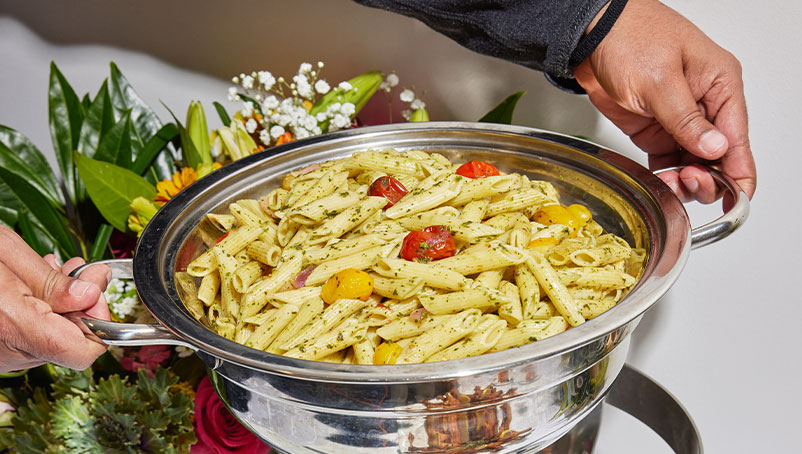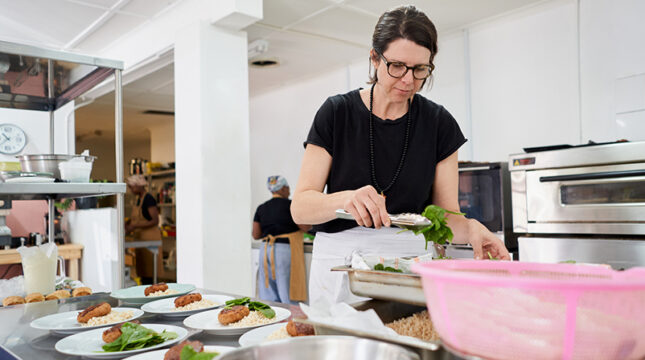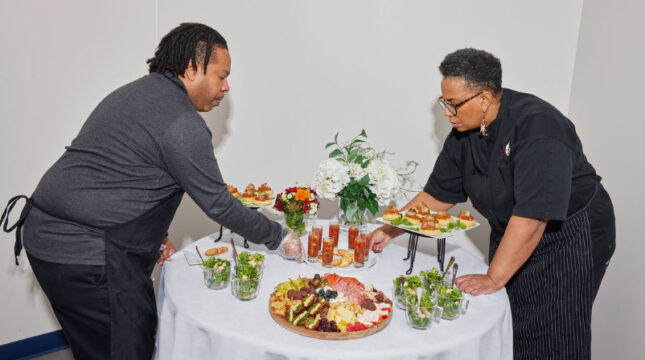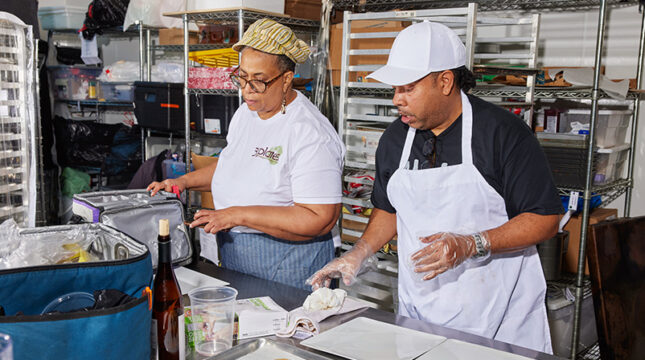Catering liability insurance is often required for caterers — most customers require it. But even if you run a restaurant, bakery, cafe or coffee shop, you may be asked to provide your services offsite. Is your business ready to weather the risk?

Catering liability insurance: What it is, what it costs and what it covers

Onsite events present unique hazards and need special coverage to protect you and your business. Jump ahead to learn:
- What is catering liability insurance?
- Why do clients often require liability insurance for catering?
- What does catering liability insurance cost?
- What’s covered by catering liability insurance?
- How NEXT’s catering liability insurance can help your small business
What is catering liability insurance?
Catering liability insurance isn’t one insurance policy. It’s a group of policies that can help protect your business from the unique mishaps that can occur during food preparation, delivery, serving and more. Even if you have restaurant insurance, it might not be sufficient to protect you from an offsite catering or food vending event.
Caterers face a unique set of challenges in the food and hospitality industry, such as:
- They must drive to or travel to where their services are needed.
- Caterers design the menu based on customer requests. Ingredients or equipment may need to be sourced from first-time, untried vendors.
- Food and drink are often prepared on borrowed, untested equipment or in kitchens they don’t fully control.
- Caterers often work with hired help or event staff that they’ve not vetted themselves.
- And caterers often have to serve large groups of diners, some of whom may have food allergies.
All of these hurdles of catering are unique to the job. Catering liability insurance can help provide coverage for this specialized field.
Why do clients often require liability insurance for catering?
Many clients and event venues may require you to share your proof of insurance coverage, also called a certificate of insurance (COI), before they’ll work with you.
Much like holding a catering business license, or being up-to-date on your food handlers requirements, up-to-date catering liability insurance shows you’re trustworthy, legitimate and ready to work.
What does catering liability insurance cost?
If you rent space in a commercial kitchen, you may need different coverage from someone cooking at home or onsite.
Or if you accidentally scorch a countertop during a client’s houseparty, insurance can help pay for repairs or replacement damage — and keep your reputation intact.
It’s important to match your needs with the correct coverage. The premium (or cost) for your catering business will be dictated by:
- The type of catering you do. If you deliver boxed cookies to office parties, you might pay less than a caterer serving five-course formal weddings.
- Your business location. Do you do most of your business locally, or do you have long commutes? Is your kitchen in a quiet suburb or in the middle of a busy downtown?
- The size of your catering company. A solo operator will usually pay less than a business owner with an extensive staff.
- The value of your business property. If you use expensive specialized kitchen appliances, or if you serve on high-cost china or flatware, your premium may be higher.
- The deductible you’re willing to pay. In general, the higher the deductible you’re comfortable with, the lower your premiums will be.
- Your experience. If you’re just starting your catering business and the ink is still dry on your business plan, you may pay more for insurance than an industry veteran.
- Your claims history. If you’ve filed insurance claims recently, you may have a higher premium.
The best way to know your exact cost for catering liability insurance is to get a quote tailor-made for your business. A quote with NEXT is free and takes about 10 minutes.
What’s covered by catering liability insurance?
Catering liability insurance is usually based on a general liability insurance policy. A general liability policy is usually the first insurance a business owner purchases due to its broad coverage.
A general liability policy can help protect your business from slip and fall injuries, damaged property, legal fees and defense costs, medical payments, advertising injury and more.
If you rent or own the space where you do business, adding commercial property insurance can help protect your business goods and gear, equipment breakdowns, inventory and business income interruption if you have to close up shop for repairs.
Or better yet — a business owner’s policy, also called BOP insurance, gives you the broad coverage of general liability and commercial property policies combined in a single, more cost-efficient bundle.
And if you drive to events, you may want to include commercial auto insurance to help protect both your drivers and vehicles during work hours.
What’s not covered by catering liability insurance
In addition to liability insurance, if you have employees, most states require you to carry workers’ compensation insurance. While general liability can offer coverage if an accident injures clients or other non-employees, workers’ comp can help if an employee gets ill or injured on the job. It can help your business pay for medical expenses, lost wages, retraining, permanent injury and more.
Commercial property coverage can help should something happen to your workspace like equipment breakdowns, damage or theft. If you rent a commercial kitchen, your landlord may require you to have this coverage.
Whatever kind of catering business you operate, the key is to get the catering insurance coverage you need, and nothing that you don’t.
How NEXT catering liability insurance can help your small business
NEXT makes it fast and easy to get the right insurance for your food business, including caterers and restaurants.
Our general liability, commercial property, BOP coverage and workers’ compensation insurance coverage can help protect your catering business from a variety of risks, including:
- Foodborne illness
- Equipment malfunction
- Property damage
- Injuries
- Workplace accidents
- Temporary business closures
- Auto accidents
You only pay for the coverage you need, and you can see your policy options in less than 10 minutes. A certificate of insurance, along with 24/7 access to your policy, is available as soon as you make a payment.



